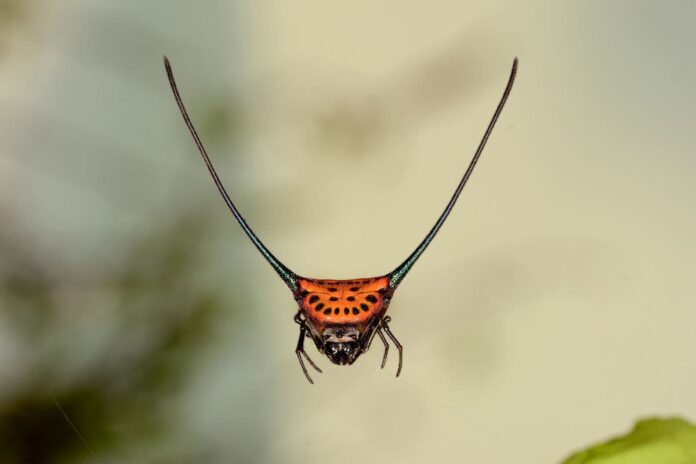Spiny orb weaver spiders always fascinate me, their appearance is extremely unique. The shapes of the spiders themselves are already different, and their colors are also very interesting as well. So below is a list of 7 spiny orb weaver spiders with unique appearances that you might want to see. Don’t forget to share your thoughts on which one you find the most interesting.
1Arrow Shaped Micrathena
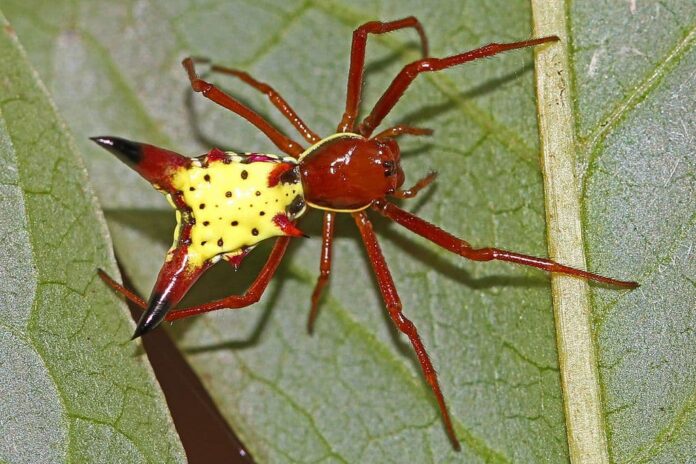
Just like the name suggests, this spider got its name from its abdomen which has an arrow shape. The abdomen of this arachnid is mostly yellow with black depressions above and variable red and black patterning below. Along with that, there are 3 pairs of tubercles that are tipped with black and red at the base. The tubercle pair at the back end of the abdomen is large, and it points outward. What you should know is that only females possess the spines, and males’ abdomens only have round edges. At the same time, males are mostly black in color with white edges so they are not as colorful as females.
Not different from other spiny orb weaver spiders, this species also lives in forests and open woods. However, they are also common yards where they can hide and they are not visible because of their tiny size. The arrow-shaped spiders capture small insects in their sticky strands of webs that they build every night to hunt. When the prey gets caught, the spider will deliver a bite of venom to subdue it and wait before they can ingest its liquified contents. Some of their common prey are leafhoppers and mosquitos, and they are harmless to humans. Female arrow-shaped spiders will lay fertilized eggs on the edge of their webs in autumn and die before the eggs hatch.
2Christmas Spider
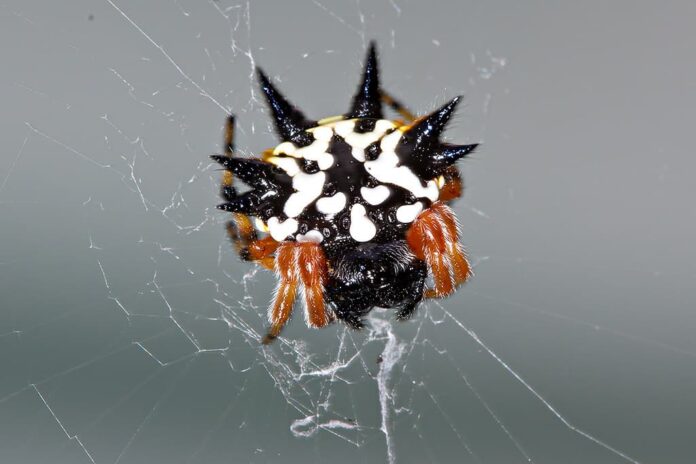
The Christmas spider is just one of the nicknames that this arachnid has besides jewel spider, six-spined spider, and spiny spider. These spiders have rectangular carapaces, and their coloration can be red, white, and/or yellow while some are dark brown to black. Females are larger, and they have bright yellow and white patterns with a ring of black spines. As for males, they have smaller spines with black, brown, white, and yellow patterns. In both sexes, the spines protrude from the bottom end and sides of their abdomens. They have 8 eyes clustered together that are arranged in two rows, and tiny little legs that curl underneath them.
Apart from appearance, males and females also have different hunting spots. Females usually sit in the middle of the web while males are found in the vegetation around the perimeter of the females’ web. These spiders are often in aggregation in which many webs are overlapping since the spiders support each other. Christmas spiders feed on small flying insects that fly into their webs. As opportunistic predators, they prey on small flying insects like flies and mosquitos.
When it comes to weird stuff, you know they come from Australia. Christmas spiders are endemic to Australia, living throughout the mainland as well as surrounding islands but more common in southern regions. The jewel spiders are also harmless to humans but they can be a nuisance to bushwalkers are they are abundant in summer. It is quite unpleasant to walk through the bush and end up covered in tiny spiders and webs, right?
3Four-Spined Jewel Spider
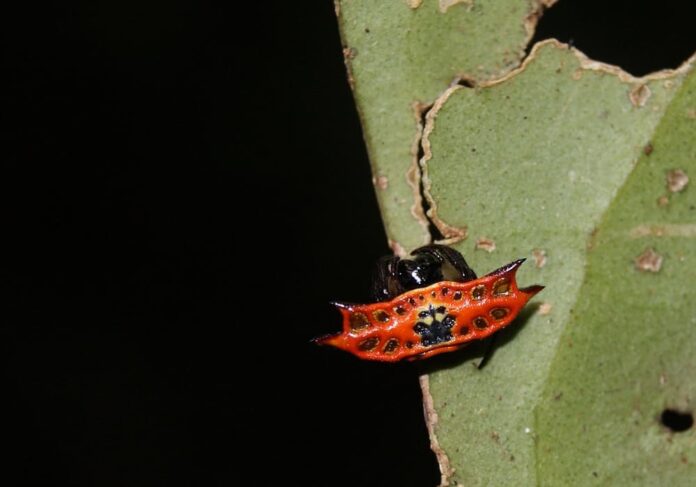
Looking very strange but true to its name, these spiny orb weaver spiders have two spines on each side. The rear pair of spines are slightly longer than the pair in the front. It has a bright orange and yellow color while the spines are dark red to black on the tips. As for the head and legs, they are mostly shiny black in color. The cool part is that the bottom part of the carapace has a marking that looks like a pirate sign. Look closer, do you see that?
Four-spined jewel spiders occur in Australia, New Guinea, and Queensland where they build their orb webs and hunt. Their habitats are in sheltered forests, tropical rainforests, or among leaves on the forest canopy. The webs are around 1.5 meters across, and the spiders hang in the middle of the web to wait for prey. And just like other spiny orb weaver spiders out there, this one also feeds on small insects.
4Horned Orb Weaver Spider

Seeing something like this for the first time would be quite an experience, wouldn’t it? The horned orb weaver spiders have a pair of intimidating long horns protruding out of their abdomens. Actually, there are 3 pairs of spines coming out of their abdomens but the middle pair stands out the most. This middle spine pair projects upward and then curves toward each other, and it is 3 times longer than the spider. The long spines only exist in females while males have rather stout conical spines. The coloration of these spiders can be red to yellow but some are also black or white. These orb weaver spiders occur from China and India through Southeast Asia.
5Long-Winged Kite Spider
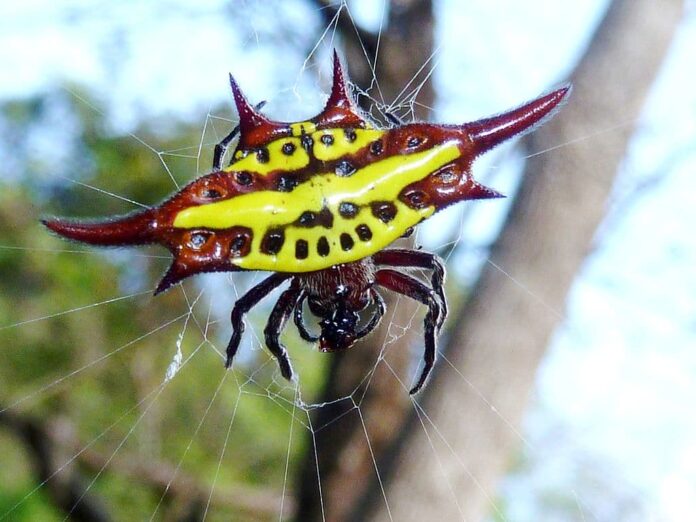
Here we have another interesting spiny orb weaver spider species that you have probably never seen before. The females of this arachnid have large, glossy, and brightly colored abdomens of orange and white. There are 6 peripheral spines, and the lateral pair is medium to long and it is slightly recurved. The males are smaller in size and less colorful, and they lack the thorny abdominal projections that females possess. Long-winged kite spiders are different from other orb weaver spiders because of the spikes that protrude from the sides.
Long-winged kite spiders have a range across central, east, and southern Africa to Madagascar. Their common habitats are forests, gardens, shrubby areas, subtropic and tropic regions, and wooded edges. Where they live, they feed mainly on insects that get entangled in the webs that they spin several meters above the forest floor.
6Oriental Spiny Orb Weaver
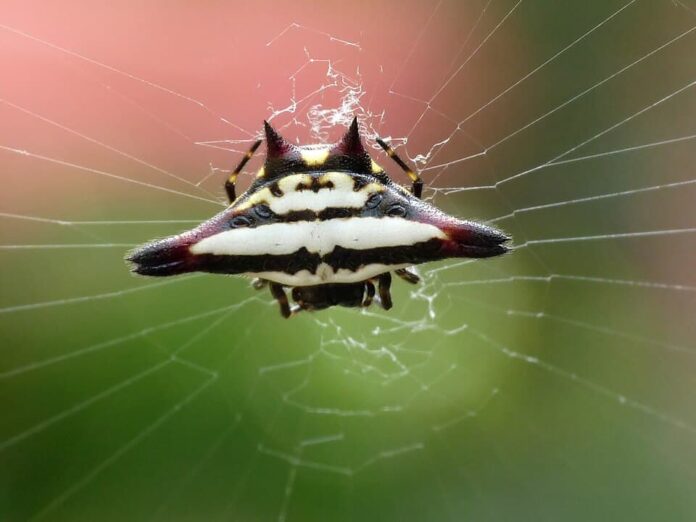
While most spiders out there have sexual dimorphism, the oriental spiny orb weaver spiders don’t really have that. Both males and females have black and white transverse bands on their abdomens. At the same time, the abdomens have three pairs of long stout lateral spines. You can differentiate the sexes by the highly sclerotized spiny abdomens that the females have. Along with that, males are smaller than females with lesser coloration and abdominal spines. These spiders build their vertical orb webs within open spaces between the branches of tall shrubs and thorns. Their webs are quite fascinating with the spiral wheel-shaped that hang from garden shrubs or tree branches.
7Spined Micrathena
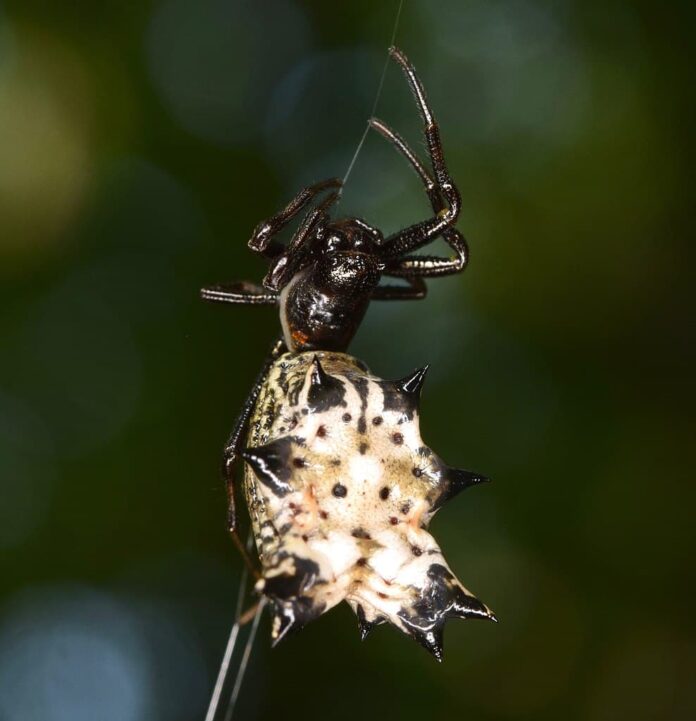
When it comes to unique spiny orb weaver spiders, this one right here has to be on the list. As you already see, the spined Micrathena aka castleback orbweaver is clearly one of a kind. This feature exists in females, and they exhibit a bulbous abdomen with spines that look unlike others. Females are typically black with white markings but there is a great variability among their colorations. Many are mostly white and may have brown or orange spots but males are usually brown in color. As for males, they only have fewer spines, flatter abdomens, and a slightly lighter tone. Both males and females can produce silk, but the males only use that during the mating ritual.
The castleback orbweavers are native to Central and North America, and they are wanderers. They rarely remain in the same web site for more than a week which is quite unique in spiders as well. Normally, they live in neotropical forests but they are also found in hardwood forests, landscaped residential, and suburban locales. These spiders like to be in areas with moisture so they are also common in woodland forests as well. It is not uncommon to see their webs near a lagoon, pond, and other small bodies of water. The webs of these spiders are delicate and closely woven so they can catch minute flying insects like gnats, leafhoppers, and mosquitoes.
Related Post: Strange-Looking Orb Spiers

